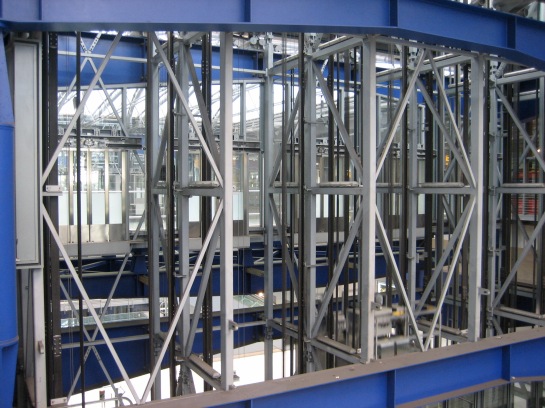 The entire top-left corner of the Underground map is pretty much off-limits to most Londoners. It has the status of a curio, the sort of thing that catches your eye as you pass the window of an antiques shop but which you’d rather not pause to examine too closely. What exactly goes on up there, the majority wonders, in that messy bit of the network that isn’t even in London, with stumps of lines sprouting off all over the place, and stations with names like Chalfont & Latimer?
The entire top-left corner of the Underground map is pretty much off-limits to most Londoners. It has the status of a curio, the sort of thing that catches your eye as you pass the window of an antiques shop but which you’d rather not pause to examine too closely. What exactly goes on up there, the majority wonders, in that messy bit of the network that isn’t even in London, with stumps of lines sprouting off all over the place, and stations with names like Chalfont & Latimer?
Blindfold most Londoners, transport them to somewhere in zone 7 or 8, then ask them to find their way back to Charing Cross without using a map or asking directions, and a moral panic would ensue. Moor Park is in Hertfordshire, just outside the boundary of Greater London, but it may as well be in Lancashire, or a county that doesn’t even exist anymore, like Salop. If there’s an unreal air about the place, it could be because it once looked more like a studio set than a working station. If there’s an underwhelming air about the place, it could be because a studio set would have more personality.
But it does have one feature in its favour, and it’s one that compounds the agreeably peculiar feel of this part of the Underground even further. Moor Park has a “secret entrance”. The inverted commas are necessary because were it an actual secret entrance, I wouldn’t be writing about it, because it would be secret. It does have a secretive ambience, however, and that’s a lot to do with it being on the edge of a rather menacing-looking patch of woodland.
Somewhere beyond these trees is Sandy Lodge golf course. There might even be a few houses. But for the most part you’ve really no cause or business to come this way. And if you do, you then have to walk all the way under four sets of railway tracks to the main entrance hall, before you can turn round and head back to your desired platform:
 The subway is rather splendid, it has to be said: well-lit, tastefully-tiled, lined with posters produced for the “100 years of Tube Art” exhibition in 2008, and above all incredibly clean. But then it is largely uncontaminated by people. I stood at one end, aware only of my own presence and some distant footsteps that seemed to be coming and going at the same time. It was very easy (and rather enticing) to imagine I had in fact stumbled upon one of the government’s nuclear bunkers, humming stoically with the anticipation of filling in forms about the apocalypse.
The subway is rather splendid, it has to be said: well-lit, tastefully-tiled, lined with posters produced for the “100 years of Tube Art” exhibition in 2008, and above all incredibly clean. But then it is largely uncontaminated by people. I stood at one end, aware only of my own presence and some distant footsteps that seemed to be coming and going at the same time. It was very easy (and rather enticing) to imagine I had in fact stumbled upon one of the government’s nuclear bunkers, humming stoically with the anticipation of filling in forms about the apocalypse.
This is a rum place and no mistake. Other Underground stations with alternate exits can be found, from the hellish (Oxford Circus) to the heavenly (East Finchley), though none are quite as delightfully eerie. Moor Park used to be on the Great Central Railway, which meant that at one time I could have caught a train from here to my home town of Loughborough in the East Midlands. Now it’s cut off from mainline services, despite trains in and out of Marylebone sharing its tracks with the Metropolitan. The circumcised roundel on top of the ‘secret entrance’ rather aptly, if painfully, sums up its plight.







